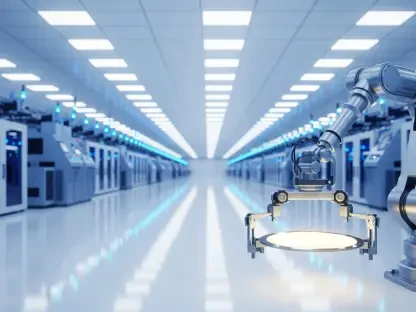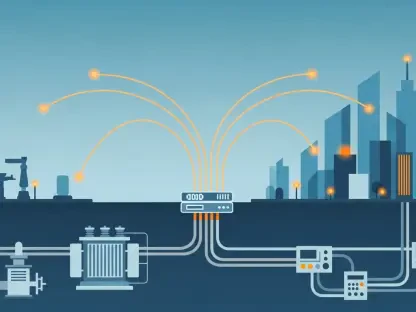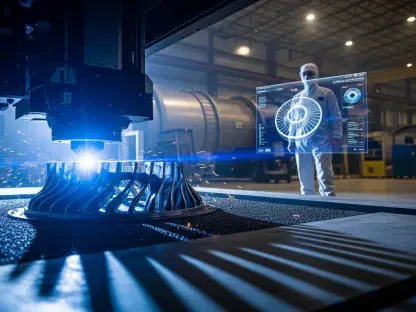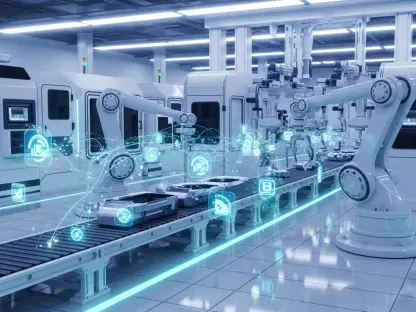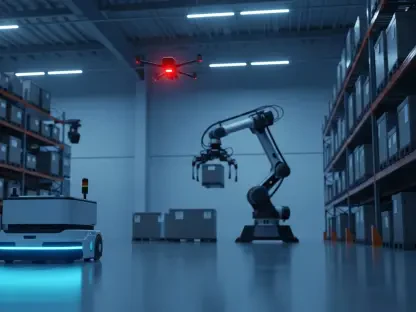Listen to the Article
Consumer AI is constantly discussed and visible in everyday life—Siri, chatbots, smart home devices, filters, and other systems designed to make life easier, more efficient, and personalized.
However, industrial AI operates in a completely different league. These systems prioritize precision, reliability, and mission-critical operations, driving industries like aerospace, manufacturing, energy, and defense, where there is no room for error.
How does this translate into day-to-day efficiencies? You’ll gain the ability to:
Build using systems that stay online, even under pressure;
Deploy AI where failure is not an option;
Operate with built-in adaptive intelligence;
Increase precision without slowing output;
Manage complex operations with minimal friction;
And more
Read on to explore what’s next in industrial AI and inform your modernization efforts.
NVIDIA Is Accelerating Innovation
Just recently, NVIDIA unveiled various additions in industrial AI—bringing AI from lab to assembly line and helping you design, predict, optimize, and validate products to reduce risk in your design process.
In addition, modern digital twins form the industrial metaverse by linking every factory asset (equipment, robots, or tools) into one environment. Agentic AI acts as a virtual engineer next to your design team, guides simulation setup, and analyzes results.
This empowers you to automate workflows and run simulations seamlessly. Agents help your research and development team refine designs and support operations with video search and summarization that track procedures and generate insight.
With an industrial metaverse ecosystem, you can integrate agentic AI across validations and optimizations while enabling global team collaboration with agents as intuitive partners. Sim-to-real and real-to-sim media technologies train robotics to learn, adapt, and cut programming time.
You run simulations to define, design, optimize, and validate future products in a virtual world. Simulated design cycles shrink so you create lighter, stronger, more reliable products in less time.
With virtual factories planned in advance, you’ll gain the ability to slash new factory construction by up to 40% and test dynamic scenarios in minutes instead of days or weeks.
The Industrial User Experience: Reengineered
The human-machine interface market centers on hardware and software that connect operators to industrial systems. This market is estimated to go beyond $14,628.05 million by 2032.
These interfaces enable monitoring, control, and diagnostics across critical environments. Early human-machine interfaces relied on lights and buttons. Today, they use touchscreens, graphical dashboards, and emerging inputs like voice and gesture. The function remains the same—translate machine data into clear, actionable control. Modern human-machine interface design prioritizes speed, accuracy, and usability. It reduces operator error and improves system visibility. As industrial systems grow more complex, intuitive interfaces are no longer optional.
In automotive, human-machine interface powers dashboards and infotainment. It manages production lines in manufacturing. The oil and gas industry benefits from operational control and safety. The same applies to energy, mining, and transport.
Siemens Partners with NVIDIA to Revolutionize Digital Twins
Siemens and NVIDIA expanded the Siemens Xcelerator platform with a new integration: The Teamcenter Digital Reality Viewer powered by NVIDIA Omniverse. This tool brings high-fidelity, physics-based 3D visualization into the product lifecycle management environment.
In addition, photorealistic visualization inside Siemens’ digital twin platform removes the need for physical prototypes and separate 3D environments. This reduces cost, shortens timelines, and speeds up go-to-market execution without sacrificing accuracy or fidelity.
Teams can now work inside a live digital twin using real-time 3D data, resulting in fewer errors, tighter collaboration, and faster decisions. Everything stays inside the same ecosystem, with no file shuffling or version control issues.
Cloud Makes More Sense
Industry cloud platforms create value by offering tailored, industry-specific solutions that drive cloud adoption beyond early tech users, combining Software as-a-Service, Platform as-a-Service, and Infrastructure as-a-Service with innovative technologies. Their modular, composable approach accelerates business adaptability by enabling partners to deliver value-added services via marketplaces and app stores, enriching ecosystems with multiple independent software vendors and system integrators.
IFS research reveals that while executive leadership has embraced the AI hype, many organizations struggle to meet operational expectations due to technology, process, and skill gaps.
A global study of 1,700 senior decision-makers, “Industrial AI: The New Frontier for Productivity, Innovation and Competition,” highlights that half of the respondents remain optimistic about realizing AI’s value within two years, with a quarter expecting results in one. Despite high expectations, most organizations are unprepared to unlock AI’s potential, presenting both opportunities and challenges for adoption.
Industry 5.0 Is on the Horizon
Industry 5.0, the Fifth Industrial Revolution, integrates humans with advanced technologies and AI-powered robots to enhance workplace processes, prioritizing human-centric values, resilience, and sustainability. Building on Industry 4.0, it leverages AI, automation, big data analytics, IoT, machine learning, robotics, smart systems, and virtualization to expand beyond manufacturing.
It’s a shift from efficiency and productivity towards societal value, where worker wellbeing takes center stage, and technology fosters prosperity while respecting planetary limits. Unlike Industry 4.0, Industry 5.0 broadens the focus to include societal wellbeing and environmental sustainability, impacting all industries and business strategies.
Google Supports Manufacturing Success
Google Cloud has partnered with GFT to launch Agentspace, a suite of AI tools built with Gemini models and designed to support manufacturing operations with task-specific automation.
The platform offers visual dashboards for organization-wide data access, predictive maintenance for equipment and supply chain disruptions, and analytics to anticipate customer needs. It also converts large volumes of machine training manuals into AI avatar-led video demonstrations to streamline workforce enablement.
By combining manufacturing expertise with large language models, Google and GFT aim to deliver AI capabilities optimized for industrial use. This launch builds on their existing partnership, which in 2024 saw GFT integrate Google Cloud’s Manufacturing Data Engine to enable AI-powered functions such as visual inspection, predictive maintenance and production forecasting.
Conclusion
Industrial AI is redefining enterprise operations by merging advanced technologies with mission-critical environments where precision and resilience are non-negotiable. From NVIDIA’s digital twins powering virtual factory models to Siemens’ photorealistic simulations replacing physical prototypes, these tools are reshaping how industries build and scale with accuracy.
Cloud-based platforms, AI agents, and human-centered Industry 5.0 frameworks now drive faster, smarter, and more adaptive systems. Solutions like Google’s Agentspace and the Siemens-NVIDIA partnership demonstrate how industrial AI closes the gap between raw data and real-time action, unlocking predictive maintenance, streamlined workflows, and sustainable performance.


